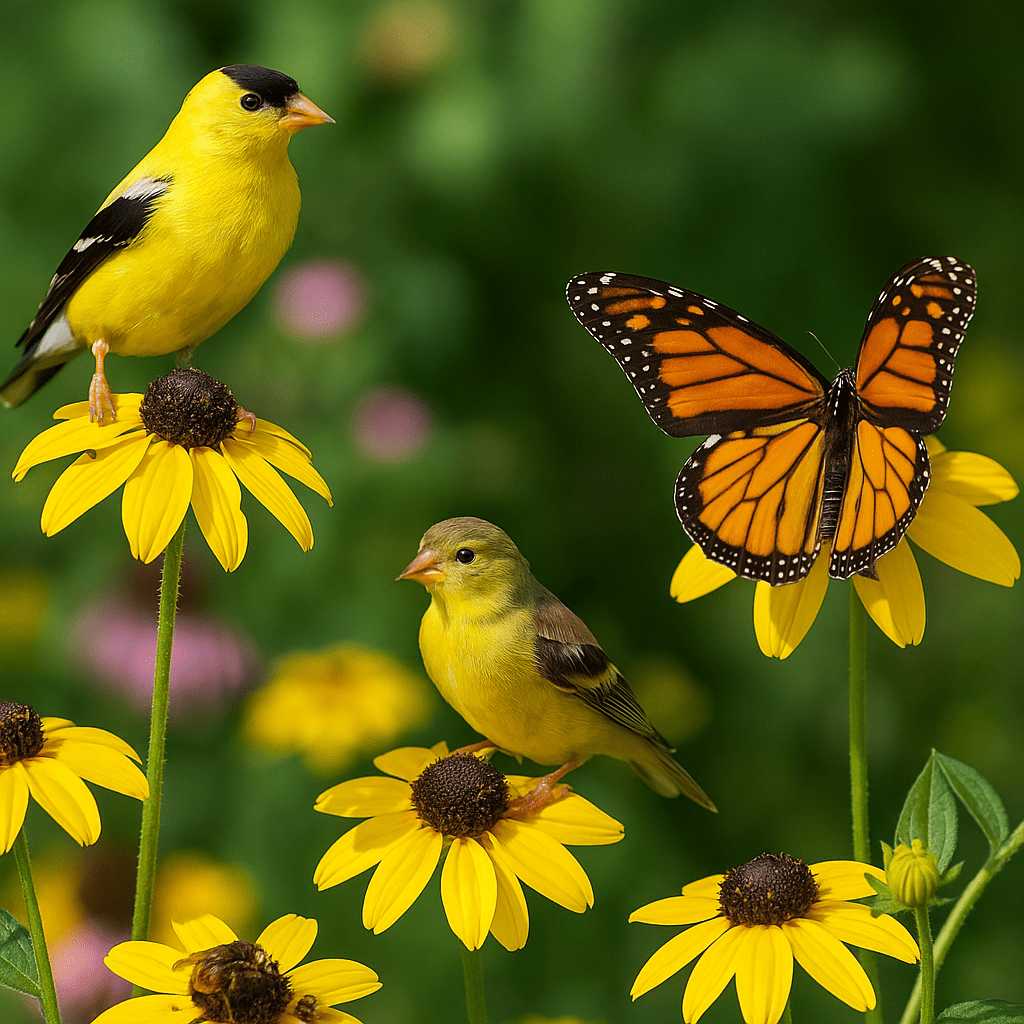A flourishing garden is more than just a pretty view—it’s a powerful, living ecosystem. By welcoming birds and pollinators into your yard, you’re not only adding life and beauty, but you’re also improving plant health, boosting crop yields, and supporting vital biodiversity.
Here’s everything you need to know to turn your outdoor space into a thriving haven for birds, bees, butterflies, and beyond.
Why Birds and Pollinators Matter in the Garden
Birds and pollinators play an essential role in nature. Birds help control pests, disperse seeds, and maintain plant balance. Pollinators—like bees, butterflies, and hummingbirds—are responsible for fertilizing more than 75% of flowering plants, including many fruits and vegetables we rely on.
The Benefits of a Wildlife-Friendly Garden
By designing your garden to attract these creatures, you’re making a lasting impact. You’ll enjoy more flowers, bigger harvests, fewer pests, and the gentle music of nature. A lively garden is also a therapeutic space to observe and connect with the outdoors.
Start with Smart Planning
To attract birds and pollinators, plan with purpose. Think in layers: tall trees, mid-level shrubs, flowering perennials, and ground covers. Each layer provides food, shelter, or nesting spots for different species.
Pay attention to sunlight, wind, and seasonal changes. A well-balanced mix of plant types and bloom times ensures year-round appeal.
Choose the Right Plants
Native plants are the MVPs. They’re adapted to your region’s climate, support local wildlife, and require less maintenance. Some top choices include:
- For Pollinators: Milkweed, bee balm, coneflowers, lavender, black-eyed Susans, and goldenrod
- For Birds: Serviceberries, elderberries, dogwoods, and sunflowers
- Herbs and Veggies: Let some herbs like basil and mint flower; pollinators love them. Dill and fennel also support butterfly larvae.
Use a mix of colors, shapes, and bloom times to keep your garden buzzing from spring through fall.
Feed Them All Year Long
Food availability is key to attracting and keeping wildlife. Plan for:
- Spring: Crocus, bluebells, wild geranium
- Summer: Zinnias, penstemon, bee balm
- Fall: Sedum, aster, goldenrod
- Winter: Berry bushes (holly, viburnum) and seed heads left standing (rudbeckia, echinacea)
Avoid over-pruning and let some plants go to seed to provide natural winter snacks for birds.
Water Is Just as Important as Food
All living things need water. Offer clean, shallow sources for both birds and insects:
- Birdbaths with sloped edges
- Shallow dishes with stones for bees to land on
- Small fountains or drip systems for a steady source
- In cold climates, heated birdbaths help birds stay hydrated year-round
Keep water features clean and refill them regularly.
Create Shelter and Nesting Spots
Wildlife won’t stick around without places to hide, nest, or rest. Add:
- Dense shrubs or hedges for safe perching
- Piles of sticks or logs for ground cover
- Birdhouses sized for native species
- Bee hotels for solitary bees
- Patches of bare soil or dry grass for ground-nesting insects
Avoid synthetic nesting materials. Stick to natural options like twigs, pet fur, and dried grass.
Skip the Chemicals
Chemical pesticides and herbicides are toxic to the very creatures you want to attract. Instead:
- Try neem oil or insecticidal soaps
- Introduce beneficial insects like ladybugs
- Use companion planting to deter pests
- Apply compost or organic fertilizers to enrich the soil naturally
Healthy soil equals healthy plants—and healthy plants attract more wildlife.
Encourage Specific Species
- Want more butterflies? Grow host plants like milkweed.
- Love hummingbirds? Focus on tubular flowers in red, pink, or orange.
- Need bees? Plant lavender, catmint, or borage in clusters.
- For songbirds: Native grasses and seed-bearing plants are ideal.
Bloom All Year Long
Pollinators are always hungry. Ensure overlapping bloom cycles by mixing early, mid, and late-season plants. This steady buffet keeps wildlife coming back.
Pro tip: Avoid double-bloom flowers. They may look pretty, but often lack nectar.
Maintain Thoughtfully
Keep your garden wild—but not unruly. A few key maintenance tips:
- Prune after the nesting season
- Leave seed heads until spring
- Avoid mowing flowering ground covers
- Water in the morning to avoid fungal diseases
- Mulch with shredded leaves or bark to retain moisture and deter weeds
Support the Bigger Picture
Your garden can do more than just beautify your yard. It contributes to a global effort to restore pollinator populations and reconnect fragmented habitats. Consider joining citizen science projects like:
- The Great Backyard Bird Count
- Monarch Watch
- Xerces Society Pollinator Conservation
Every flower planted and every feeder filled makes a difference.
Final Thoughts
Creating a bird- and pollinator-friendly garden doesn’t require a total landscape overhaul. With just a few simple, intentional choices—like planting native species, providing water, and skipping the chemicals—you can transform your yard into a vibrant, sustainable sanctuary.
Start small, stay curious, and let nature do the rest. Your garden will soon come alive with color, sound, and the joyful hum of life.
Let your garden grow wild—and watch it thrive.


